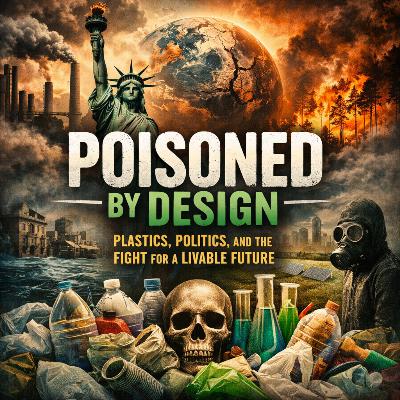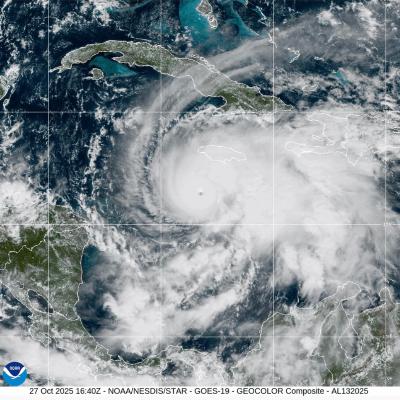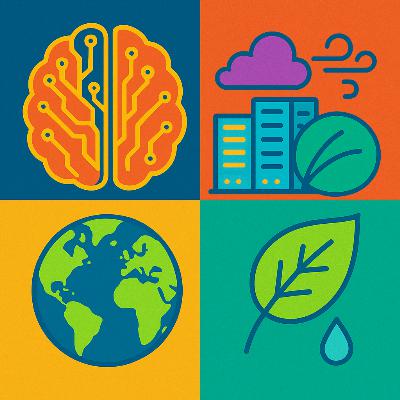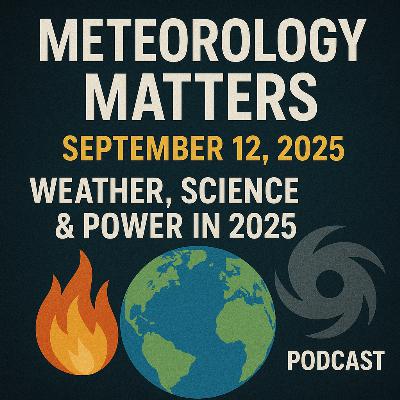
Meteorology Matters
Author: Rob Jones
Subscribed: 4Played: 122Description
Welcome to Meteorology Matters, your go-to AI podcast for all things weather and climate! Join us as we dive into the fascinating world of meteorology, unpacking the latest news on hurricanes, blizzards, and other natural disasters that shape our planet.
Each episode brings in-depth analysis and insights into current events, seasonal changes, and emerging trends. Whether you’re a weather buff or simply curious about how climate impacts your daily life, Meteorology Matters equips you with knowledge and stories that bring the science of weather to life.
Tune in to explore how we can better prepare for the elements, understand the forces behind extreme weather, and advocate for a sustainable future. Weather isn’t just a forecast, it’s a conversation, and it matters now more than ever!
🎧 Language Guide:
- Seasons 1–100: Episodes in English
- Seasons 101–200: Episodes in Spanish (Español)
If you’d like to listen in Spanish, start with Season 101.
Para escuchar en español, comience en la Temporada 101.
ESPAÑOL
¡Bienvenido a Meteorology Matters, tu pódcast de referencia sobre el tiempo y el clima! Acompáñanos mientras exploramos el fascinante mundo de la meteorología, analizando las últimas noticias sobre huracanes, tormentas de nieve y otros desastres naturales que dan forma a nuestro planeta.
Cada episodio ofrece un análisis profundo y perspectivas sobre los eventos actuales, los cambios estacionales y las nuevas tendencias. Ya seas un apasionado del tiempo o simplemente tengas curiosidad por cómo el clima influye en tu vida diaria, Meteorology Matters te brinda conocimientos e historias que dan vida a la ciencia del clima.
Sintoniza para descubrir cómo podemos prepararnos mejor frente a los elementos, entender las fuerzas detrás del tiempo extremo y abogar por un futuro sostenible. El tiempo no es solo un pronóstico: es una conversación, ¡y ahora importa más que nunca!
🎧 Guía de idioma:
- Temporadas 1–100: Episodios en inglés
- Temporadas 101–200: Episodios en español
If you prefer English, start with Season 1.
Si prefieres español, comienza con la Temporada 101.


![[ES] Tu Pronóstico de Fin de Año: Qué Significa el Clima Para Tus Viajes Esta Semana Festiva [ES] Tu Pronóstico de Fin de Año: Qué Significa el Clima Para Tus Viajes Esta Semana Festiva](https://media.rss.com/meteorology-matters/ep_cover_20251224_061214_6daa26ff8463b45e7f71b436931606c8.png)
![[ES] Cuando la política mata la inteligencia meteorológica [ES] Cuando la política mata la inteligencia meteorológica](https://s3.castbox.fm/95/85/ee/b7685dc1518fff08b8022eb9a89ec533b1_scaled_v1_400.jpg)
![[ES] Huracán Melissa: última oportunidad para prepararse [ES] Huracán Melissa: última oportunidad para prepararse](https://s3.castbox.fm/5d/51/89/b59c2f2d953e83f0ff78551b8fd10a5dfd_scaled_v1_400.jpg)













